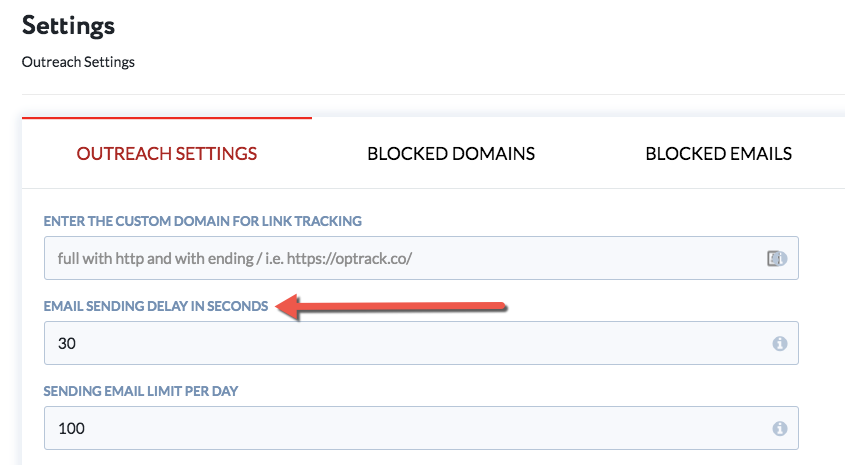Email deliverability is all about getting the emails you send into the inboxes of your clients.
In this article, we'll talk about different factors that can affect your email deliverability and give you some practical tips how to overcome them to achieve high deliverability rate.
1. Space out the delivery of your emails
By default, we will send your campaign with a 30 seconds delay between each email. If you want to be more cautious, you can increase the delay time to a minute or more. If you send too many emails too close together it will look suspicious to any ISP or email service provider. We think that 30 seconds is a good gap between emails, but if your emails don't need to go out urgently, you can always increase this time. This setting is available in the admin section:

2. Thoroughly check the validity of email addresses
If you send a lot of emails to invalid email addresses you will get a lot of non-deliveries and this will affect your sender reputation score. You need to spend a good bit of time making sure that the email addresses are correct. There are tools available that help with email verification such as hunter.io. We also double check out emails with Zerobounce
3. Try to avoid spam complaints
A spam complaint is when a recipient marks an email as spam. Getting spam complaints can really damage your sender reputation, but there are things you can do to avoid this.
- Personalize your emails - the more you personalize your emails for the recipients the less they'll look like a bulk email.
- Research your prospects - it is always better to send your campaign to a smaller, more targeted list than to a large list of less qualified prospects.
- Don't send too many follow-ups - 3 follow-ups with a few days in between each is really the maximum you should send. Also, make sure to cancel all follow-ups if you get a response saying the prospect is not interested.
- Adhere to any anti-spam laws - Make sure to not to violate anti-spam laws, such as CAN-SPAM and the European standard coming into force in May - GDPR. These type of regulations want to protect people's privacy and their personal data. The cautious approach is to ask for a permission to market in your first email. For example - "Do you mind if I send you information about my product?" or "Would you like to see the infographic?"
4. Monitor your responses
When you send out your emails you need to regularly check your OutreachPlus inbox for responses. If you notice that you are getting a lot of bounces, stop the campaign to figure out why. If you're getting complaints then stop the campaign completely.
If you previously ran campaigns with a high open and response rate, use those templates again. Track all results of your campaigns, so even if you make mistakes in one campaign, you can stop the campaign and/or build a better campaign next time.
5. Add a good signature
You are not a spammer. You have a real business! Make sure you show this in your email. Put your name, title, link to your website, and a phone number in your signature.
6. Set up SPF and DKIM
We're getting a bit technical now but it's not our fault! Both SPF and DKIM improve your reputation as a sender.
SPF (sender policy framework) is a setting you set up to indicate which mail servers are allowed to send email on your behalf. OutreachPlus doesn't send any emails, they all go through your email tool of choice so you don't have to add us. But, for example, if you use Gmail then you'd add G-suite as the only mail server that is allowed to send emails on your behalf. This prevents spammers from sending emails from other mail servers impersonating you.
DKIM adds a digital signature to your emails when you send them out. Your emails are encrypted and decrypted when they arrive so they can't be changed along the way.
Information from Google about SPF
Information from Google about DKIM
7. Don't use free email accounts
Spammers sign up for free email accounts so there's always going to be more restrictions and more analysis of any emails sent from free email accounts. Do your best to avoid them.
When to use a different email/domain when you are sending emails?
If you are doing a lot of outreach to large groups of people that are unlikely to know you, then you are better off using a different domain/email address than your main one. This type of outreach typically leads to more spam complaints, so you are better off using a dedicated email address.
